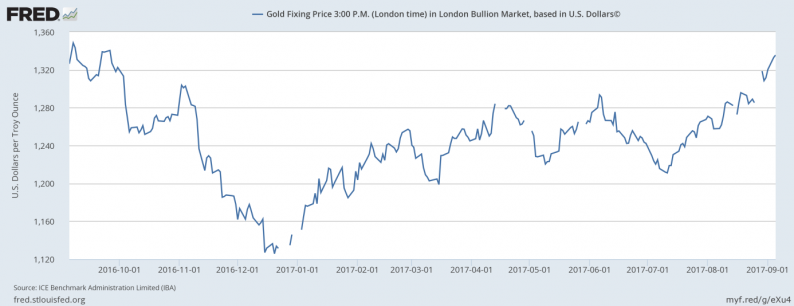On Sunday, North Korea conducted another nuclear test. What does it imply for the gold market?
The crisis over the Korean Peninsula tightened again after a short period of calm. On August 15, Kim Jong-un said he was delaying a decision on firing missiles towards Guam to see what Trump does next, which helped to ease the tensions between North Korea and the U.S. However, the regime launched ballistic missile over Japan on August 29 (after firing a few Scud missiles on August 26). And three days ago, North Korea detonated a nuclear test, causing a magnitude 6.3 earthquake.
Although the country has conducted already five nuclear tests, the recent one was the strongest explosion, about five to six times more powerful than the previous blast. Moreover, it was likely the hydrogen bomb (although probably not fully fledged), which is far more powerful than the regular atomic weapons. The improved nuclear capability of the Kim’s regime worried investors, fueling safe-haven demand for gold. Hence, the price of the yellow metal reached 11-month high on Tuesday, as one can see in the chart below.
Chart 1: Gold prices over the last year.

However, investors should remember that geopolitical events, including incidents related to North Korea, often cause only short-timed and limited moves in the gold market (we write about this issue in a detailed way in the September edition of the Market Overview). For example, both North Korean nuclear tests conducted in 2016 failed to trigger a sustained gold’s rally (actually, the price of gold declined after the second test in the previous year). It suggests that gold’s recent flight may have more to do with the growing perception that Fed is becoming more dovish and struggling U.S. dollar rather than with rising geopolitical tensions. Indeed, the market odds of the Fed hike in December decreased from almost 47 percent one month ago to the current about 30 percent.













Leave A Comment